Da Nang History Facts and Timeline
(Da Nang, Vietnam)
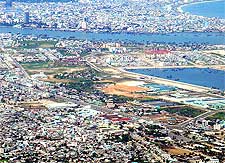
The 21st-century city of Da Nang is a modern city, considered to be one of the largest and most important in Vietnam. Many visitors breeze through the city on their way to better-known destinations in Central Vietnam, such as Hue and Hoi An.
The history of Da Nang dates back around 3,000 years and the city has several sites that might appeal to history enthusiasts. The highlight of these attractions is perhaps the Cham Museum.
The Cham Era
The areas surrounding Da Nang have a recorded history dating back nearly 3,000 years, when such areas were part of the Champa Kingdom. The people who founded the Champa Kingdom originally came from Indonesia and occupied much of Central Vietnam until the 1300s.
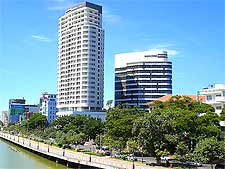
Vietnamese expansion from the north led to the complete fall of the empire by the mid-1400s.
Visitors can learn more about the Champa Kingdom by viewing the various stone sculptures which can be found in the museum in My Son, some 70 km / 43 miles to the south of Da Nang.
A trip to the museum can be combined with a visit to the UNESCO-protected My Son temple ruins.
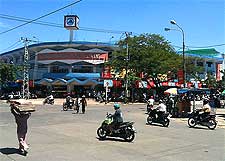
European Arrival
Some time after the Vietnamese eventually settled on the land once occupied by the Champa Kingdom, the first European explorers began to arrive in the region. At this time, Hoi An was a much larger port than Da Nang, meaning that the first traders and missionaries from
Portugal,
Spain and
France landed in Hoi An. These first Europeans arrived during the 17th and 18th centuries.
One of the most important events in the history of Da Nang occurred in 1835, when Emperor Minh Mang banned European ships from using all Vietnamese ports other than the one at Da Nang. As a result, the port rapidly became the largest commercial port in the region.
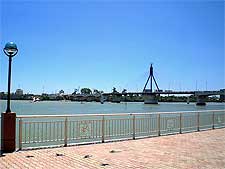
French Colonialism
In 1847, the French began decades of sustained assaults on Vietnam in order to continue their expansion of French Indochina. Local resistance continued throughout the second part of the 19th century, especially by Vietnamese forces under the command of General Nguyen Tri Phuong.
These forces even managed to delay conquest by the French in a local 1859 battle. However, the French soon won control of several provinces. In 1889, Da Nang was renamed Tourane and went on to become one of the top five cities in Indochina.
By the 1920s, the French had built a luxury resort on the hillsides overlooking Da Nang. The Ba Na Hill Station soon became popular with both the French and the well-off Vietnamese. Nowadays, visitors can reach the resort by taking a lengthy cable car journey, from where wondrous views over the South China Sea can be enjoyed.
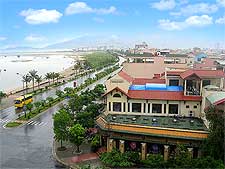
The Vietnam War
The city's US air base is well-documented in the Vietnam War history of Da Nang, since it was one of the busiest bases in the world at this time.
The beaches around the city became popular 'rest and recuperation' destinations among US soldiers during the war. China Beach remains popular to this day and is a favourite stop-off on the backpacker trail.
 The 21st-century city of Da Nang is a modern city, considered to be one of the largest and most important in Vietnam. Many visitors breeze through the city on their way to better-known destinations in Central Vietnam, such as Hue and Hoi An.
The 21st-century city of Da Nang is a modern city, considered to be one of the largest and most important in Vietnam. Many visitors breeze through the city on their way to better-known destinations in Central Vietnam, such as Hue and Hoi An. Vietnamese expansion from the north led to the complete fall of the empire by the mid-1400s.
Vietnamese expansion from the north led to the complete fall of the empire by the mid-1400s.

